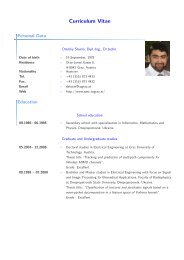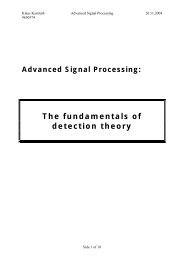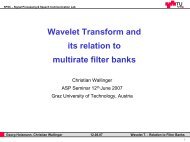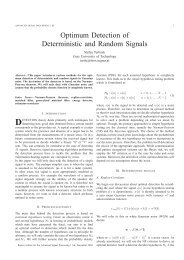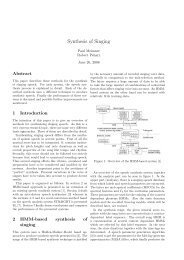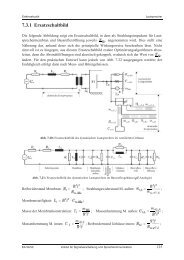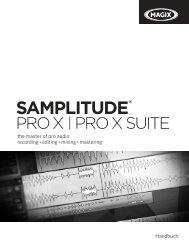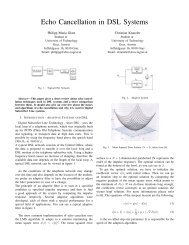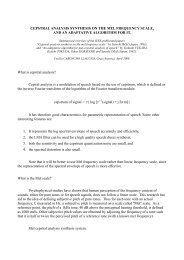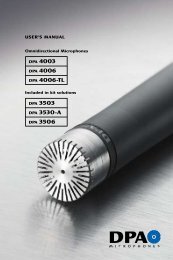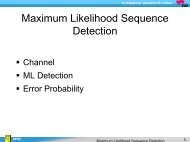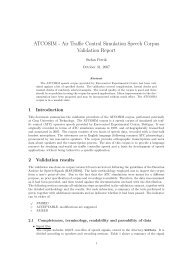Contents - SPSC - Graz University of Technology
Contents - SPSC - Graz University of Technology
Contents - SPSC - Graz University of Technology
You also want an ePaper? Increase the reach of your titles
YUMPU automatically turns print PDFs into web optimized ePapers that Google loves.
Gregor Pirker, Michael Wohlmayr, Stefan Petrik, Franz Pernkopf PTDB-TUG<br />
7 Post-processing<br />
7.1 Microphone and Laryngograph Signals<br />
The provided microphone and laryngograph signals in this database were digitized at 48 kHz<br />
and 16 bit resolution. The two signal types were recorded in stereo wav-files. The left channel<br />
was used for the microphone, the right channel for the laryngograph. Later on, the channels<br />
were extracted into mono wav-files and renamed. No further post-processing (cutting, filtering,<br />
. . . ) was carried out on this data.<br />
7.2 Reference Signals<br />
The reference pitch trajectories, which are provided as ground truth data, were extracted out <strong>of</strong><br />
the laryngograph waveforms. In general, a laryngograph signal recorded during voiced speech<br />
shows a quasi-periodic shape that represents the vocal folds vibration. Additionally, a lower<br />
frequency component is superimposed on this shape, which is mainly caused by larynx movement.<br />
Before pitch extraction can be carried out, this part has to be removed by a high pass filter to<br />
reduce pitch candidates, that deviate from the true pitch trajectory (outliers). Filtering was<br />
carried out in Matlab by applying a linear phase Kaiser filter with parameters β = 0,5 and n<br />
= 2400 to the rough laryngograph signals. For each gender group one specific cut-<strong>of</strong>f frequency<br />
fc was used. For the female speaker signals the cut-<strong>of</strong>f frequency was fc = 25Hz, for the male<br />
fc = 15Hz. Finally, the RAPT algorithm [6] was run on the filtered laryngograph signals to<br />
extract the pitch. The RAPT algorithm is implemented in Wavesurfer [8] and can be applied to<br />
multiple wave-files in batch mode using a scripting language called the snack sound toolkit [9].<br />
The output <strong>of</strong> RAPT provides 4 measures per time frame:<br />
1st column: the pitch estimate [Hz]<br />
2nd column: probability <strong>of</strong> voicing<br />
3rd column: local root mean squared estimate (RMSE)<br />
4rd column: value <strong>of</strong> peak normalized cross-correlation value that was detected and used to<br />
determine the pitch estimate.<br />
The reference pitch was extracted using a 32ms analysis window with 10ms hopsize. Depending<br />
on the application, the user might want to extract the pitch with different settings for the<br />
analysis window. This can be done quite easily with [9] as follows<br />
Rev.: alpha 1.1 DRAFT, August 22, 2012 – 12 –




